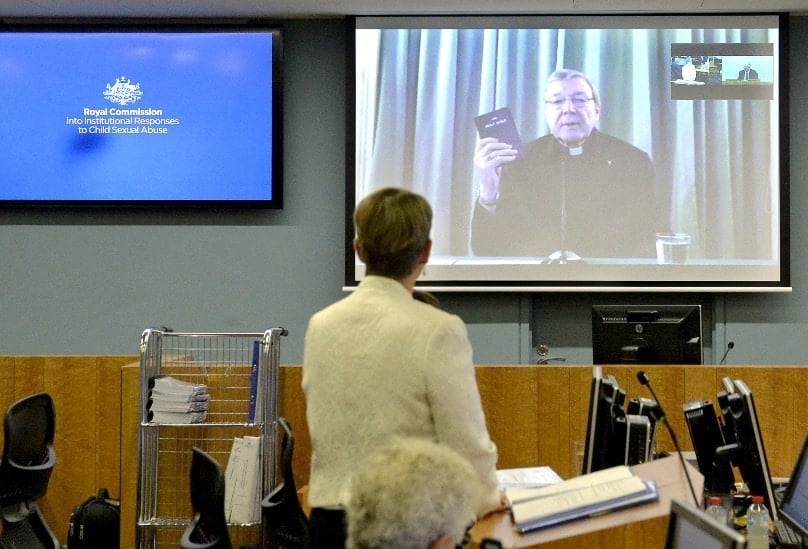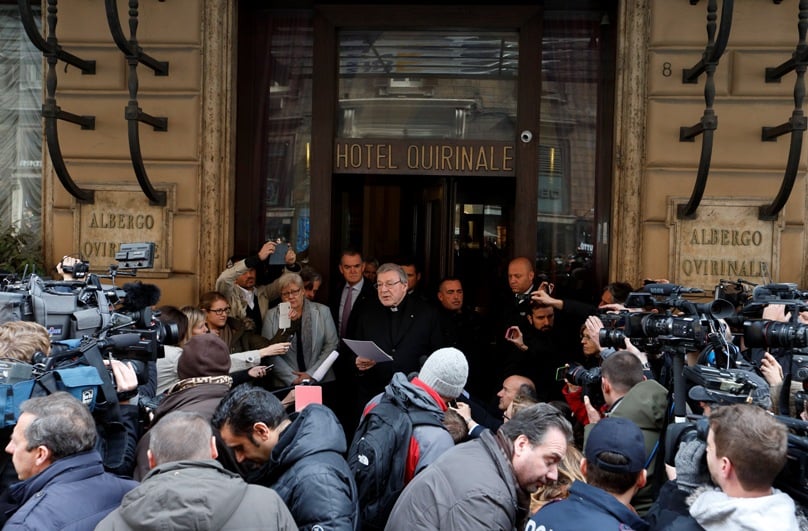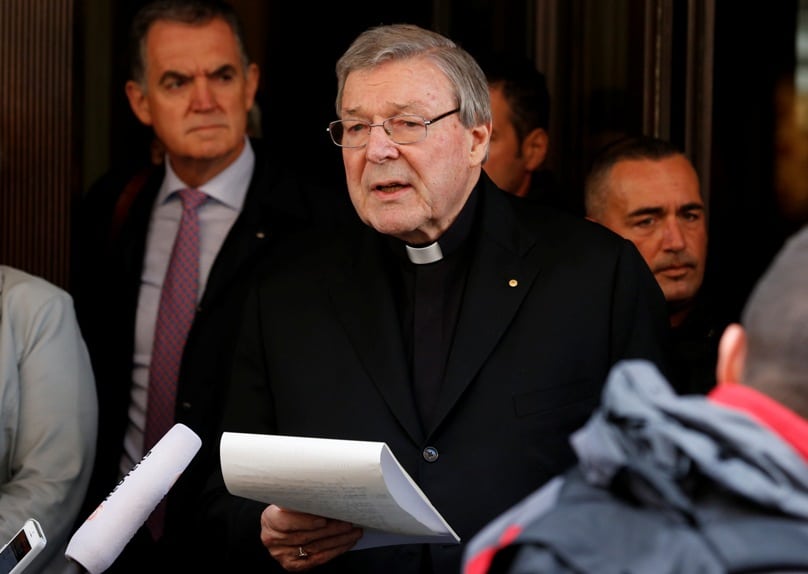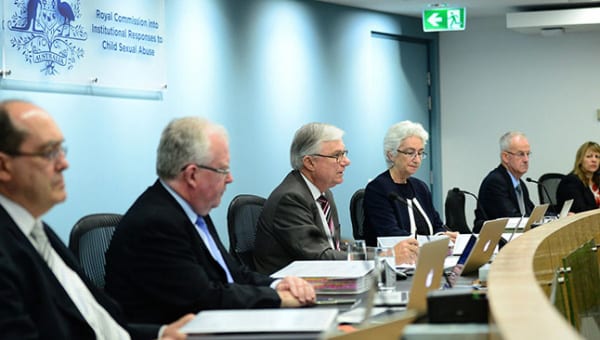
Look closer, the cardinal’s actions speak for themselves
The long-awaited unredacted Royal Commission reports for the Diocese of Ballarat and the Archdiocese of Melbourne were released today.
The abuse that occurred in Victoria is horrific, and the damage done in Ballarat simply criminal. Nothing can detract from that.
But again, it seems that there is a desire to blame it all on one man. Although the unredacted portions dealt with a number of people, the media focus has been exclusively, and unsurprisingly, on Cardinal George Pell. The banner across the ABC report has labelled them “the Pell Papers.”
Despite the media interest that will develop over the next couple of days, the reports – which together comprise some 800 pages – tell us very little that we did not already know. In this piece, I’d like to break down the key findings as they relate to Cardinal Pell and provide just a little bit of commentary on each.
Brother Ted Dowlan
Ted Dowlan was a Christian Brother who taught at St Patrick’s College, Ballarat, from 1973. After a long and awful record of abuse, Dowlan ultimately pled guilty to the indecent assault of a number of boys, four of whom attended St Patrick’s.
In the full report on Ballarat released today, the Royal Commission found that “in the early 1970s, Cardinal Pell was told by one or two students, and one or two priests, about Dowlan’s infractions of a sexual nature with minors.”
That was to be expected, because it is what the Cardinal told the Royal Commission when he testified back in February 2016. Here’s the relevant extract from page 16232 of the transcript:

Gail Furness SC: When did you first hear of Christian Brothers in Ballarat offending against children?
Cardinal Pell: That’s a very good question. Perhaps in the early 1970s I heard things about Dowlan.
Gail Furness SC: l What did you hear about Dowlan?
Cardinal Pell: I heard that there were problems at St Pat’s College.
Gail Furness SC: What sort of problems?
Cardinal Pell: Unspecified, but harsh discipline and possibly other infractions also.
Gail Furness SC: When you say ‘possibly other infractions’, you mean of a sexual nature?
Cardinal Pell: I do.
Gail Furness SC: Who did you hear that from?
Cardinal Pell: Once again, it’s difficult to recall accurately. I could have heard it from one or two of the students and certainly I think one or two of the priests mentioned that there were problems and some of them believed they were very – because of harsh discipline.
Gail Furness SC: And the problems described to you were problems of a sexual kind with children?
Cardinal Pell: None of the activities were described to me, they were just referred to briefly.
Gail Furness SC: But you answered the question of, ‘When you say possibly other infractions, you mean of a sexual nature?’, you agreed with that proposition?
Cardinal Pell: Yes, that was a – that’s correct.
Gail Furness SC: And it could only have been sexual with children, couldn’t it?
Cardinal Pell: That’s correct, with minors.
So, this first finding isn’t a surprise. It is almost word for word what the Cardinal told the Royal Commission himself, more than four years ago.
Cardinal Pell also told the Royal Commission that he reported the matter to the school chaplain, who assured him that the Christian Brothers knew, and were doing something about it. Dowlan was moved at the end of the year. Cardinal Pell told the Royal Commission that he did not know Dowlan was sent to another school and continued offending, and admitted that he should have done more, including consulting the school principal “and just ensured that the matter was properly treated.”
The Royal Commission agreed with this response from the Cardinal, finding “that he should have consulted Brother Nangle and ensured that the matter was properly treated.”
There’s nothing new in these findings we don’t already know
So far, the findings have only been to repeat exactly what the Cardinal himself had said, word for word.
But then the Royal Commission steps away from their agreement with the Cardinal by accepting the evidence of Timothy Green. Green said that he told Cardinal Pell in 1974 in the change room of a swimming pool that he had told Cardinal Pell that “Brother Dowlan is touching little boys” and that, in response, the Cardinal told him not to be ridiculous and walked out. The Cardinal told the Commission that he had no recollection of any such conversation.
The Commission accepted Green’s evidence that the conversation occurred, notwithstanding a few factors that worked against him. Firstly, by Green’s own evidence, he had his back to the Cardinal the whole time and did not look at him.
Sam Duggan: Was he standing up or sitting down?
Timothy Green: We were all sitting on a bench, he walked behind us; none of us – well, I certainly didn’t anyway – turned around to look at him, I kept staring straight ahead of me, so I don’t know what he was doing.
Sam Duggan: When you spoke to him, were you turning away from him?
Timothy Green: I had my back to him
Secondly, Mr Green said that he was with two other boys at the time, one of whom were deceased. The other boy, given the pseudonym BWD, gave a statement to the Royal Commission which read in part:
I do not recall ever being at the Eureka pool with Tim Green and [REDACTED] together although that is not to say that it didn’t happen. I just don’t have a recollection of it. It wouldn’t surprise me if I had been there with [REDACTED].
…
I do not have any recollection of a conversation that took place at the Eureka Swimming Pool between Tim Green and Father Pell where it was said that Father Dowlan was touching little boys.
Thirdly, Mr Green told the Royal Commission that Cardinal Pell had visited his school in 1971 or 1972, where he thanked the Cardinal on behalf of the whole school. The Cardinal’s diaries showed no such visit to the school during those years, and the Royal Commission accepted that he was not at the school at the time.
There is nothing in the findings about Br Dowlan that had not been discussed earlier and, in terms of the timing of his knowledge, nothing the Cardinal himself didn’t acknowledge.
Gerald Ridsdale
Gerald Ridsdale is one of Australia’s most notorious paedophiles. He was a priest in the Diocese of Ballarat, which is where Cardinal Pell was from, before becoming auxiliary Bishop of Melbourne in 1987.
The Royal Commission made findings about what Cardinal Pell knew about Ridsdale’s offending.
First, they found that because Cardinal Pell knew that another priest – Monsignor John Day – had offended against children in 1971, the issue of child sexual abuse was known to him, and so that he would have had some questions in his mind about the prudence of Ridsdale taking boys on camping trips in 1973. It was not suggested by the Royal Commission that this amounted to having knowledge of offending.
Instead, the key finding relates to what Cardinal Pell learned of Ridsdale’s offending while he was a member of the College of Consultors from 1977. In particular, there were meetings in September 1979 and January 1980 where Ridsdale was granted a year of study leave. The Royal Commission found that while the application for study leave was not unusual, the consultors knew that the reason “was to get him out of parish work and away from children.”

There was another meeting in September 1982, where the minutes recorded that it had “become necessary” for Ridsdale to move from his parish at Mortlake. Ridsdale was moved to an adult education centre in Sydney, where he would essentially work in an office job.
Cardinal Pell testified that he was not told that this move was because Ridsdale was offending. He maintains that he was deceived by the Bishop at the time, Ronald Mulkerans. Two other priests also at the same meeting gave evidence, and neither recalled the discussion that occurred.
One priest at the meeting, Father Eric Bryant, told the Commission that he recalled the meeting clearly, because it was his first as a consultor. He told the Commission that the Bishop said there was a problem with homosexuality in the Diocese, and then went on to discuss Ridsdale, but did not mention the age of the victims.
All of this was discussed at the Royal Commission, and so the only bit we were awaiting was how the Royal Commission interpreted all these meetings.
The Royal Commission found that Ridsdale’s move would have led to a discussion because of the urgency to the move, the undisputed knowledge of Bishop Mulkearns about his offending, and that it was another move for Ridsdale in a very short time. The report said it was “inconceivable” that Bishop Mulkearns did not tell the consultors the true reason for Ridsdale’s move, because he had told others, including those to whom Ridsdale would be responsible in Sydney.
It needs to be noted, however, that apart from Father Bryant’s testimony and the limited notes contained in the meeting minutes, there was no evidence of what was said at these meetings. It was on the basis of what the Royal Commissioners inferred would have been disclosed at these meetings, rather than any testimony about what was said, that these findings were made.
Peter Searson
Peter Searson was the parish priest of Doveton parish from 1984-1996. The list of his behaviours during this time were undoubtedly horrific. There was a complaint that he sexually abused a young girl in the confessional, that he held a knife to the chest of a female student, pointed a gun at students, showed them a dead body in a coffin, tape-recorded confessions of primary school children and made them kneel between his knees in confession. He was cruel to animals, including killing a cat and a bird in front of students.
The alleged sexual misconduct in the confessional prompted the resignation of the school principal in 1986, and a petition to have Searson removed at the time made the front page of the local newspaper. The Victorian Inquiry was told that police even interviewed children on a Saturday, but “they were unable to get enough spoken evidence” and news reports suggested that police had been investigating Searson as early as 1982 and again in 1986. That he was a menace was well known.
The Royal Commission findings, however, largely focused on the knowledge and action of Cardinal Pell, who was auxiliary Bishop in Melbourne from 1987-1996.
According to the unredacted report, in November 1989, a delegation of staff from Holy Family School in Doveton, together with Mr Norm Lalor, the CEO chairperson for the primary staff group, met with then- Bishop Pell. They provided a list of grievances, which read:
Harassment of Staff and Parents
Harassment of individuals around the school premises.
Accusing individual staff of disloyalty without cause.
Confronting of staff on trivial matters before children
Children
Small group of children shown dead body in coffin.
Cruelty to an animal in front of young children.
Compulsion on children to attend reconciliation on demand.
Unnecessary use of children’s toilets.
Harassment of children.
Before the full delegation arrived, Bishop Pell met with Mr Lalor, and asked for a briefing on the matter. The Cardinal’s evidence was that Mr Lalor did not take him through the complaints in any comprehensive way at all. The Royal Commission report said that Mr Lalor knew there had been “an incident” but that the complainant was reticent on the details.
Mr Lalor did not give evidence about either meeting.
Three staff members who were part of the delegation provided written statements to the Royal Commission. None gave evidence that Cardinal Pell was told of sexual misconduct, and one said he recalled the teachers told Cardinal Pell that Searson should be given a second chance.
The Royal Commission accepted the evidence of the four, none of whom were present at the meeting or even aware that it had occurred, nor spoke to Cardinal Pell about Searson, nor were aware of any of their colleagues doing so. Indeed, one had never met Cardinal Pell and one was not working at the CEO at the time the meeting occurred.

In accepting their evidence, the Royal Commission found that “on the basis of the matters known to Bishop Pell on his own evidence (being the matters on the list of incidents and grievances and the ‘non-specific’ allegation of sexual misconduct), he ought reasonably to have concluded that action needed to be taken in relation to Father Searson” and that he should have recommended to Archbishop Little that he be removed.
At no time did the Royal Commission suggest that then- Bishop Pell had the ability to remove Searson, and anyone who knows about the way the Church works would know that an auxiliary bishop cannot remove a priest.
But that only tells part of the story. What happened when Cardinal Pell did have some authority over Searson, after becoming Archbishop of Melbourne in August 1996?
By October, Cardinal Pell had put in place and announced the Melbourne Response and appointed an independent commissioner to investigate allegations of child sexual abuse within the archdiocese. Shortly thereafter, Cardinal Pell confirmed to media that Mr O’Callaghan had investigated the allegations against Searson and, on 14 March, 1997, Searson had been suspended from ministry.
Before Cardinal Pell became Archbishop of Melbourne, the police lacked the evidence to do something about Searson; the auxiliary bishops, teachers and principal lacked the authority to do something about Searson; and Archbishop Little seemingly lacked the will to do anything about Searson, so he remained in the Doveton parish for 13 years. It was Cardinal Pell who ultimately removed him as one of his first actions as Archbishop.
Related articles:
Cardinal Pell rejects redacted statements
The lay role in covering up abuse
UPDATE: Cardinal Pell set free by High Court
Church Responds to Royal Commission
